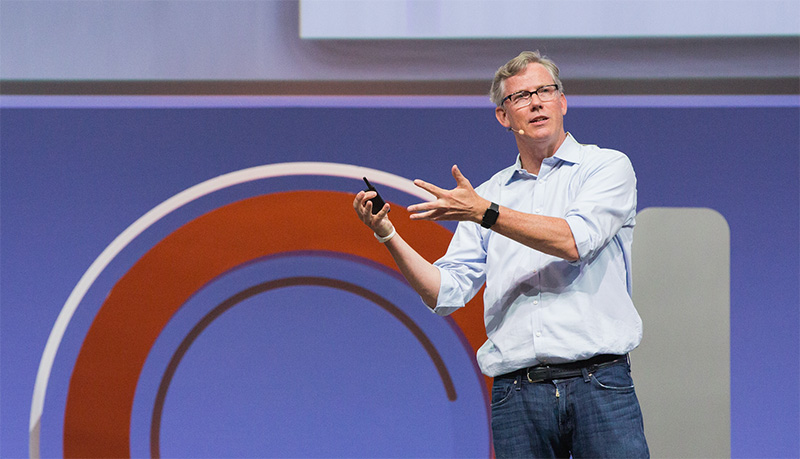Inbound Marketing was re defined when Brian Halligan with Co founder Dharmesh Shah launched HubSpot. Brandknewmag talks to Brian on the inspiration and evolution of HubSpot, the Future of Marketing etc.
Q: HubSpot is considered the “in” thing in Inbound Marketing today: How did it all begin and what was the big inspiration at the time?
It all began back when I was working at a venture capital firm and was tasked with helping companies scale through sales and marketing. I very quickly realized that the traditional methods of sales and marketing were broken — people didn’t want to be sold to, they wanted to be helped. So I left my job and reached out to my MIT classmate, startup guru Dharmesh Shah. He had done entrepreneurial work before, and was driving crazy amounts of traffic to his very successful online startup community, OnStartups.com.
Together, we founded HubSpot, and set out to make a new standard of how companies treated and interacted with their customers, called “inbound marketing”. We created a single, all-in-one tool that integrated email, social media, website design, starting with just marketing and then over time moving into the realm of sales.
Q: It’s not a one size fits all: With multiple devices and platforms and modes of consumption, how does HubSpot create, curate, aggregate, and repurpose content to bespoke purposes?
We’re lucky enough to have a ton of remarkable content creators on our team here at HubSpot. Their tireless and creative efforts keep our sales, agency, marketing, and engineering blogs (among many other content outlets) updated with fresh content in multiple languages. Our writers cover marketing tips, advice on how to hit your sales numbers, technical analysis of industry trends, social media hacks to win followers — anything that might be of use to those in the inbound field. It’s a lot of work, but HubSpot invests heavily in our approach to content.
Right now is an especially exciting time to be a content producer at HubSpot, because we’re growing the volume of research we perform. Our State of Inbound 2015 report was a comprehensive look at how nearly 4,000 marketers and salespeople across 150 countries conduct business, what matters to them, and what makes their lives difficult. It highlighted tons of interesting trends, like the continuing global adoption of inbound, general dissatisfaction with the current methods of paid advertising, and the importance of service level agreements (SLAs) between marketing and sales teams.
We also recently conducted a study on what are known as “compounding blog posts”. As it turns out, 10% of blog posts are what’re known as “compounding”, meaning that they add initial traffic, and continue to generate increasing traffic over time. In fact, they are so effective that this mere 10% of posts account for 38% of traffic. Impressive.
Q: Would you want to share with us some of HubSpot’s most interesting projects in terms of challenge, execution and results?
There is one specific example I love to give when people ask me a question like this. It was a very interesting project and it really speaks to the kind of culture and working environment we have here at HubSpot.
Years ago, one of our sales reps, Pete Caputa, came to me and said he had a great idea of how we could revolutionize our sales process: We would sell our product to third parties, and they would turn around and resell it to their customers. Personally, I hated the idea, but he had hammered out a lot of the details and had a pretty good business plan, so I told him he could run with it on nights and weekends. Fast forward to today, and our more than 2,500 partners are responsible for 40% of the company’s revenue, We’re able to successfully work with both brands and partners without having to detract from the experience of either, and everybody wins.
I love this story because it speaks so strongly of the kind of culture we’ve created here at HubSpot. If any employee can put in the work and show that an idea has potential, they are free to “beta test” it for a few weeks. If the idea is viable, it becomes part of HubSpot’s business, and they become a “mini-CEO” and run the team.
Leadin, a HubSpot product, is another fantastic example of innovation through autonomy. We asked employees to take a look at what kind of product might be able to disrupt us. Shortly after, these guys turned around and built a free-to-use product that lets small businesses and entrepreneurs grab contact information and track site visits. We just launched it during INBOUND last month.
Q: Which do you classify as HubSpot’s biggest market in terms of customer base and which is your strongest emerging market?
HubSpot’s biggest market is small- to mid-size businesses (SMB). They represent a large market that is perfectly designed to adopt inbound marketing and be able to compete with larger businesses. Inbound marketing and sales gives these companies the leverage they need to stand out and grow.
Our strongest emerging market is the diverse, global SMB market. While we continue to market and work with a growing customer base of English-speaking businesses, we are simultaneously focusing on emerging markets like Latin America, EMEA, and Asia Pacific. This was the motivation behind both the opening of our new APAC regional headquarters in Singapore and the addition of five new languages to the UI of our marketing product: Spanish, Portuguese, French, German, and Japanese.
Q: If you were to profile an ideal, typical profile of a customer that HubSpot desires to partner with, what would that profile be and why?
At HubSpot, we like to partner with people and businesses who are ready to adopt the inbound mindset. This means they care about the customer, and understand that the business revolves around the customer’s success. They want to provide value. They get that inbound is about helping the customer, not about selling to them.
Q: We reckon the Academy and the Marketing Library at HubSpot were created to offer augmented value to your client base, as your own Inbound Marketing mechanism — how successful has that been for HubSpot?
The HubSpot Academy and the Marketing Library have been huge for us. We see these resources as an investment in our prospects, in our customers, and in the marketing industry as a whole. After all, the inbound revolution isn’t just a HubSpot thing, it’s a global movement. We want it to happen, whether or not people are HubSpot customers.
In return for our investment in their education, these people are empowered with the tools they need to grow their businesses. It’s a two-way street, too: Customers can tell us what they want to know, and if there’s enough support, we’ll add classes and teach them everything we know about the subject.
Our Inbound Certification has also been hugely helpful in not only providing additional education for marketers both in and out of our organization, but in creating advocacy for inbound marketing. The courses are completely free, and the certification has become something of an industry standard. It’s something that employers and other marketers now see on people’s resume and say, “Hey, this person knows her stuff.” Whether or not people are HubSpot customers the certification gives them a ton of value, so we love that it’s proven useful to the industry.
Q: What is the Future of Marketing and the Road Map drawn up by HubSpot to stay relevant?
The Future of Marketing lies in the convergence of marketing and sales. As more and more information becomes available through technology and data analysis, the work marketers to do qualify leads for the sales process will increasingly overlap with the work salespeople do to prospect and close. Alignment of marketing and sales goals is already an important part of doing business, and that need will just expand in the coming months and years.
As the functions of these two fields move closer together, and the role of data continues to expand, the need for an all-in-one marketing and sales technology platform will grow, as well. This outlook is what we take into account with every update and enhancement we make to the HubSpot platform. Simply asked, how will this help marketers and salespeople work together to move the needle?


